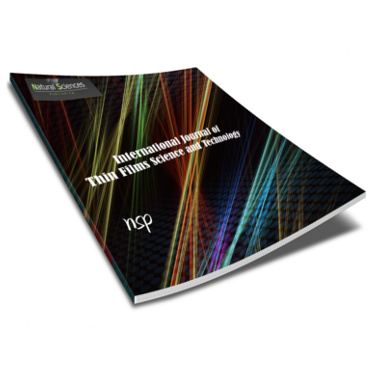International Journal of Thin Film Science and Technology

Abstract
Barium strontium titanate is a ferroelectric material that is currently attracting much attention because it has high dielectric constant, low dissipation factor, tunable dielectric constant at microwave frequencies, and low-leakage current.The Ba0.7Sr0.3TiO3 compound studied in the present paper was synthesised using sol-gel method. The ferroelectric Ba0.7Sr0.3TiO3 was prepared using the sol-gel method, with barium and strontium acetate as a source for Ba and Sr as well as Ti(IV) isopropoxide as a source for Ti. The solvent used in this paper was acetic acid whereas 2- methoxyethanol has was used a stabiliser for Ti (IV) isopropoxide. Moreover, the effect of changing the electrical properties, the nanocrystal structure, and the particle size of ferroelectric Ba0.7Sr0.3TiO3 on its sintering temperature phase was investigated. The XRD results showed that sintering Ba0.7Sr0.3TiO3 at 900, °C 1000 °C, and 1100 °C occurred in a tetragonal phase. The sintering temperature affected the lattice constant and tetragonality of the material, where increasing sintering temperature decreased the tetragonality and the lattice constant. The dielectric properties of Ba0.7Sr0.3TiO3 sintered at 1100 °C were superior to that of the ferroelectric sample sintered at 1000 °C. The Curie temperature occurred at (28–32) °C when the dielectric constant was plotted as a function of temperature.
Recommended Citation
S. Naji, Iqbal and A. Gatea, Hamed
(2020)
"Influence of Sintering Temperature on Ferroelectric Ba0.7Sr0.3TiO3 Microstructure, Grain Size, and Electrical Properties,"
International Journal of Thin Film Science and Technology: Vol. 9
:
Iss.
2
, PP -.
Available at:
https://digitalcommons.aaru.edu.jo/ijtfst/vol9/iss2/7

